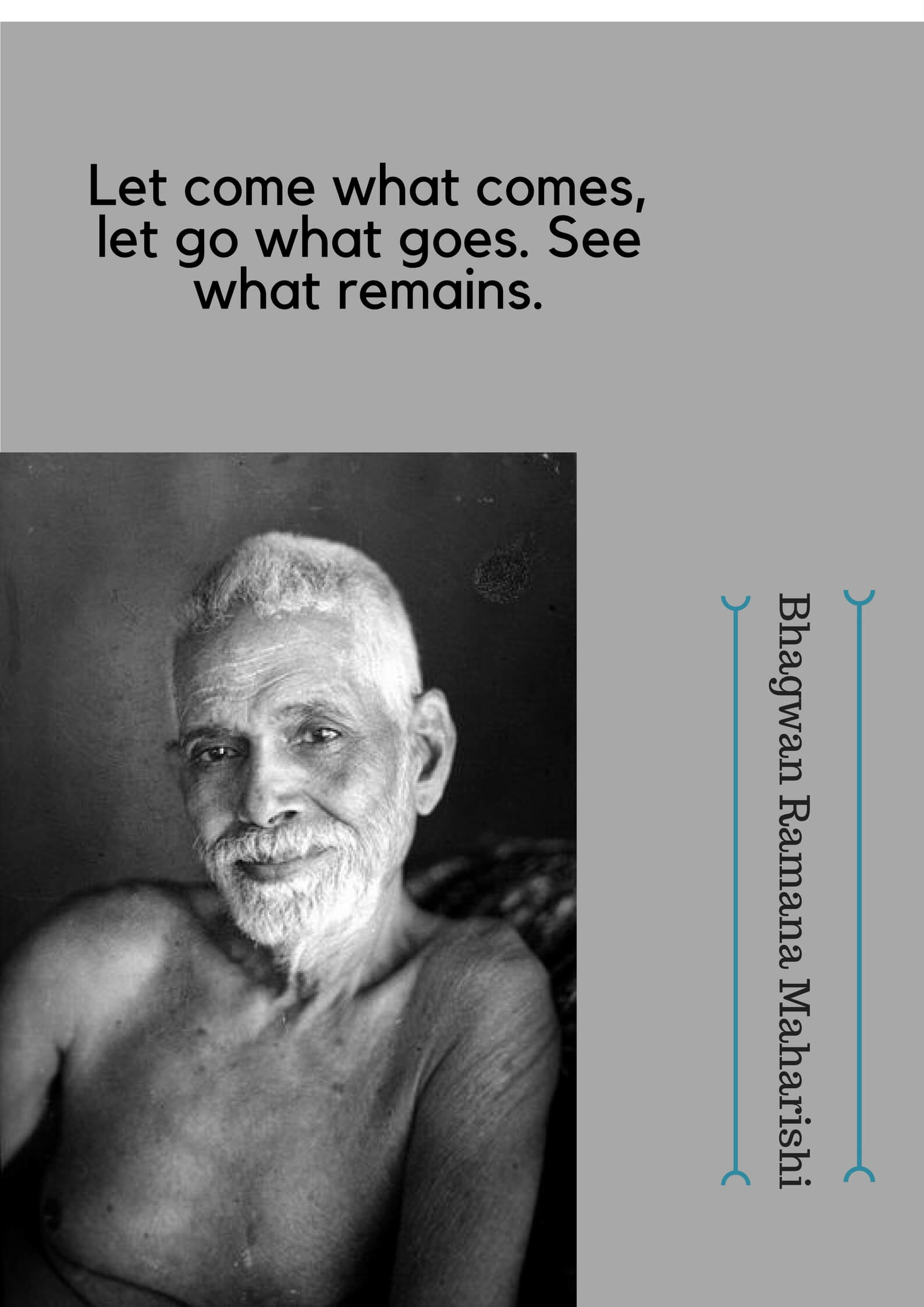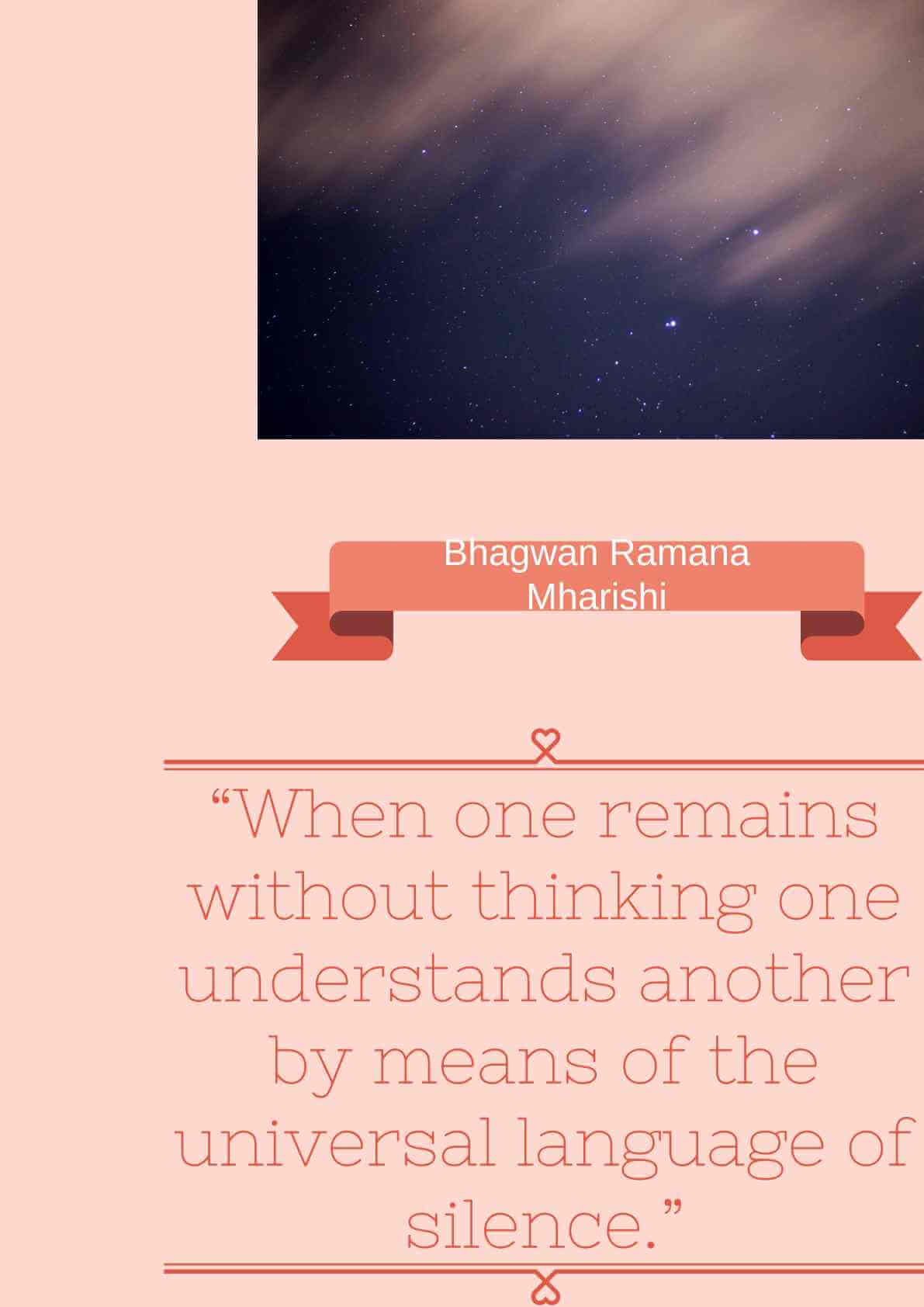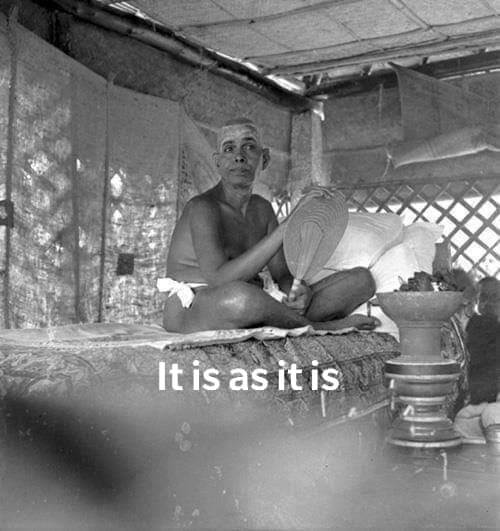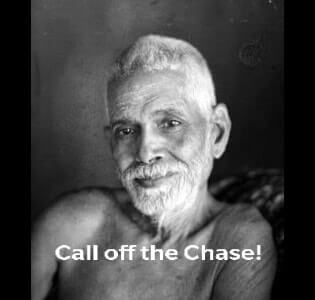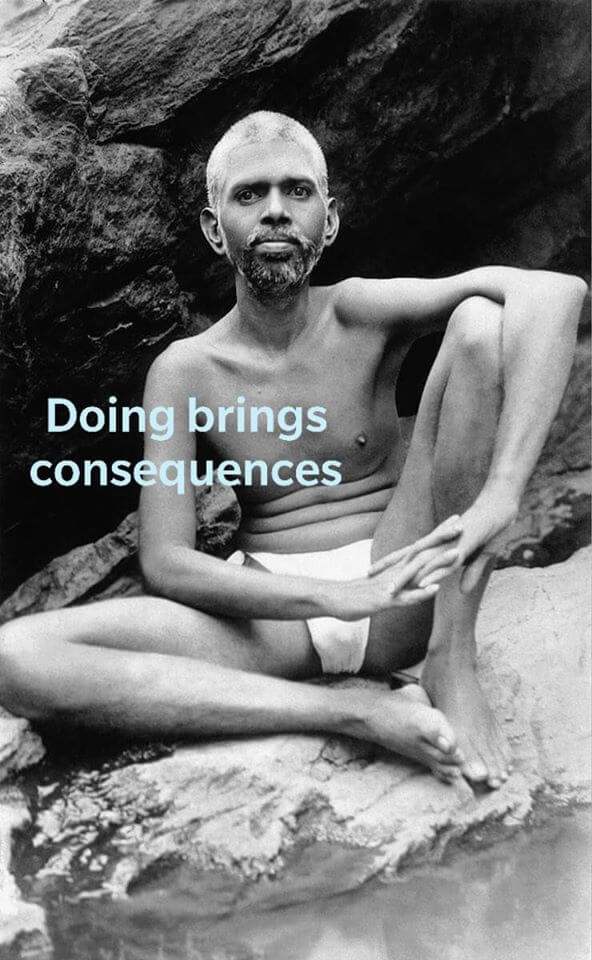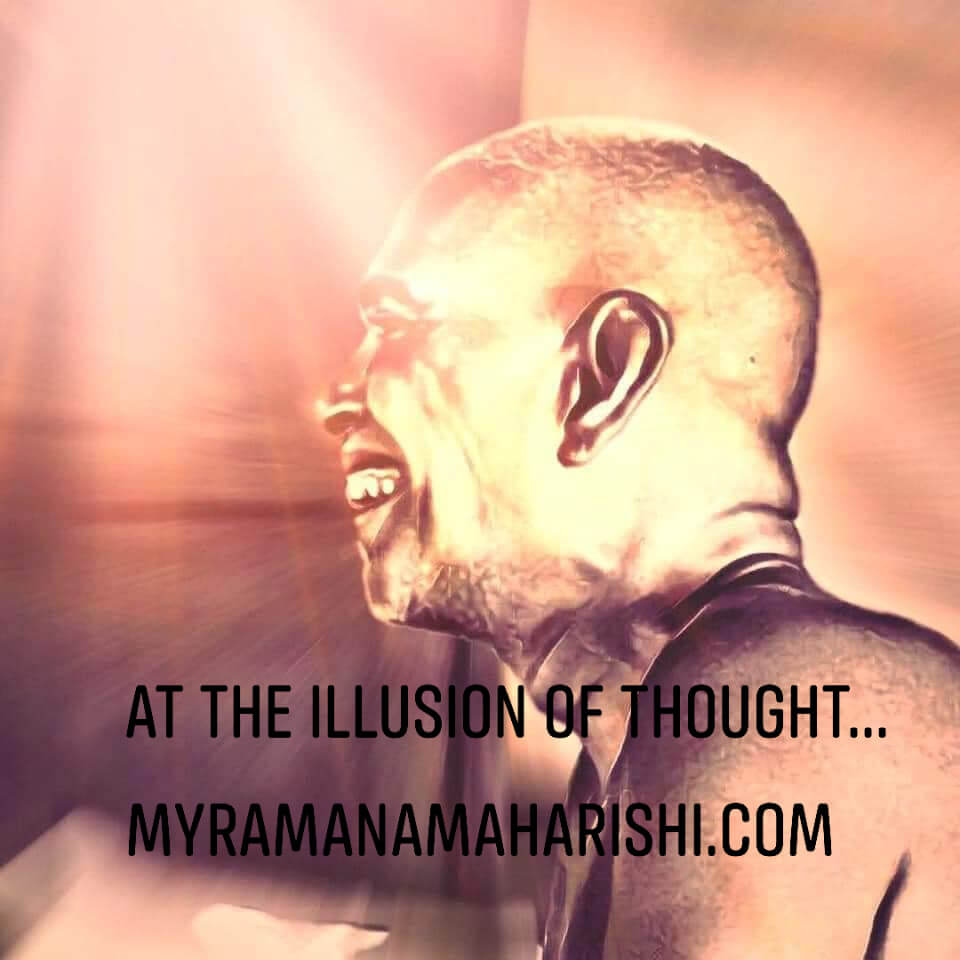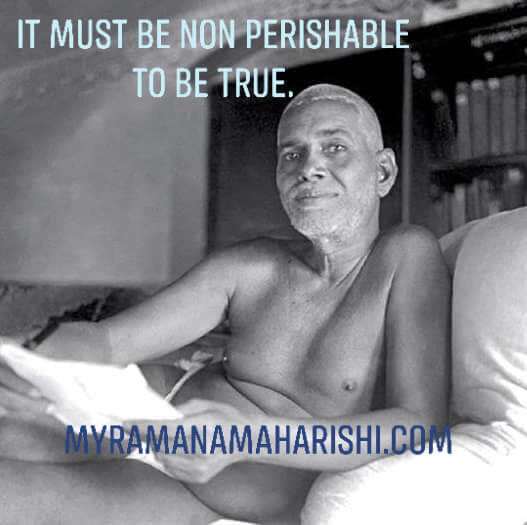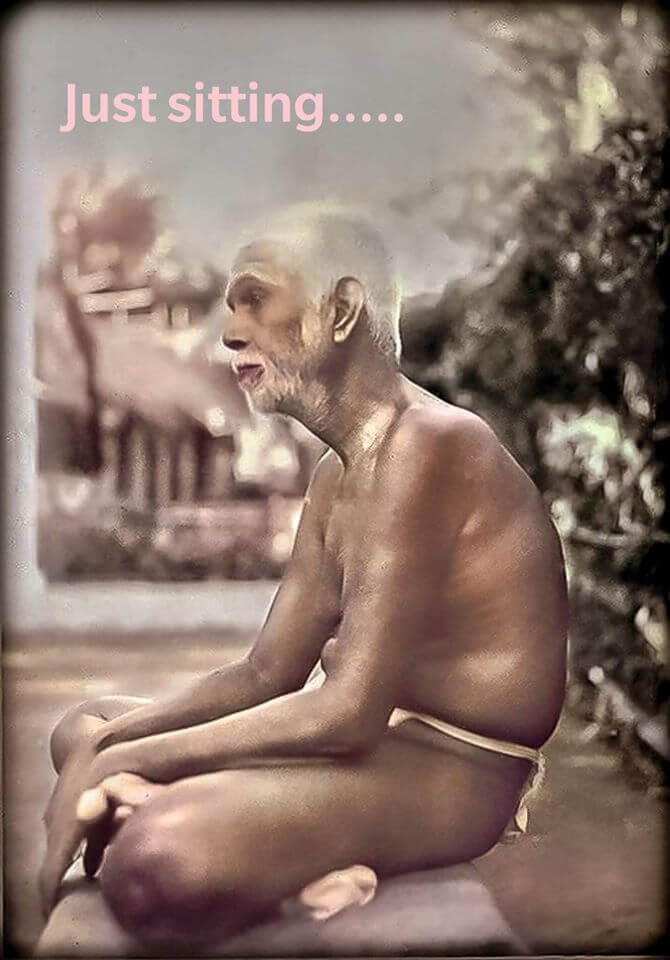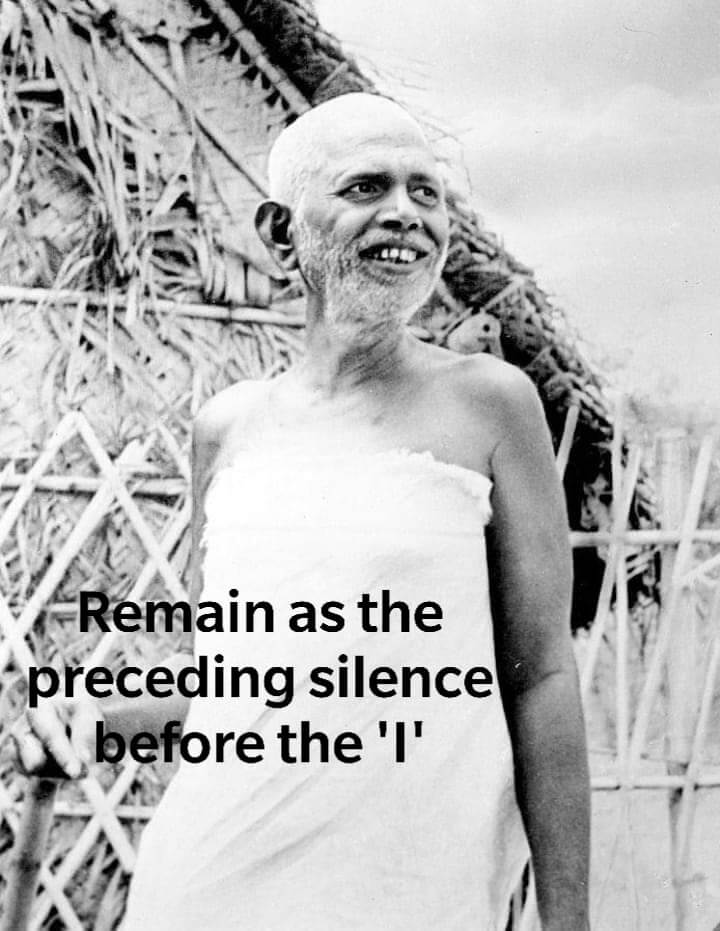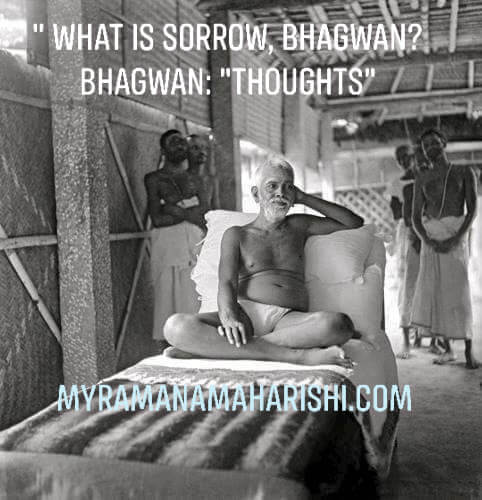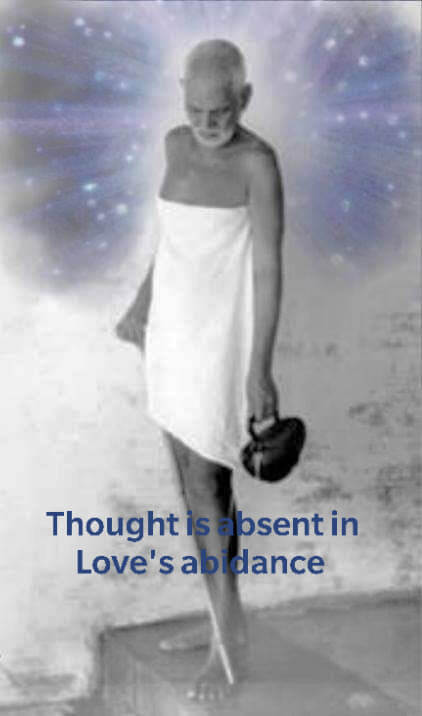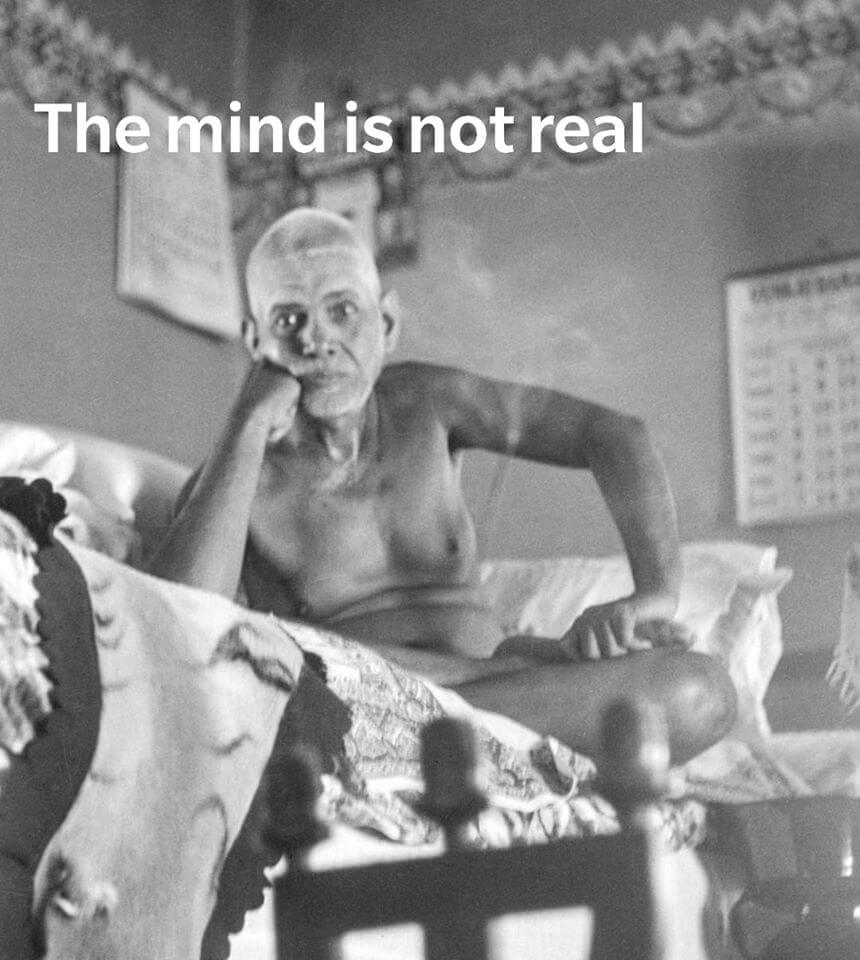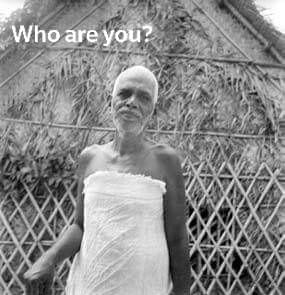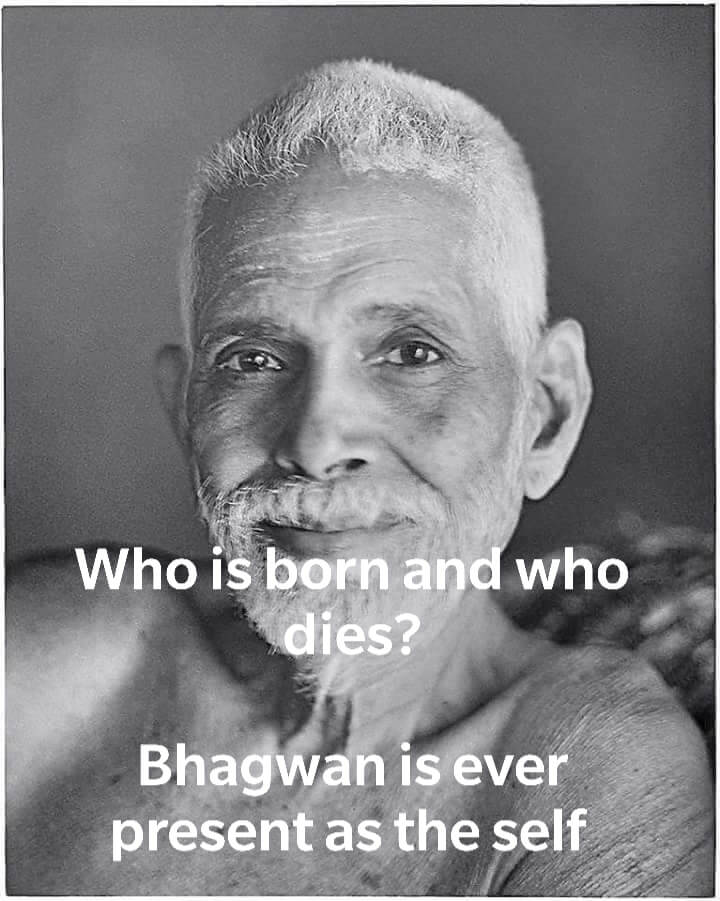Bhagavan Ramana Maharishi’s Timeline
Video Curated by San Deep
1. December 30, 1879:
The birth of our beloved Bhagavan Ramana Maharishi happens at night 1 AM on the auspicious

the occasion of Ardhadarshanam day (the day on which Shiva appeared before Patanjali and other saints) in the town of Tiruchuli in Tamil Nadu.
He is fondly called Venkataraman. His childhood is spent in playing various sports and he enjoys swimming. He has deep samadhi like sleep states. The house in which he is born is now under the jurisdiction of Ramanashramam and called Sundaramandiram.

His parents were Sundaram Iyer and Alagammal, who were lucky to attain liberation by giving birth to such a great saint, the Maharishi.

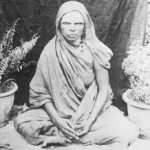
2. 1892:
Sundaram Iyer, Bhagavan’s father passes away compelling the young Venkataram to shift to Madurai along with his brother, Nagaswamy to his uncle’s house, Subbiar. He excelles at all sports, studied at American High School and lives in Madurai till he turned 17 years of age. He always has a very deep sleep and his friends would often mock at this.
3. 1895:

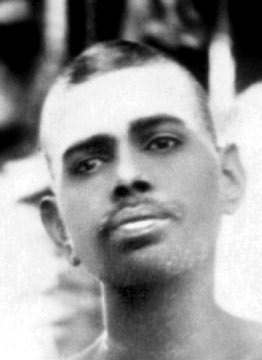
The young Venkatraman explodes with an unknown ecstacy at the mention of the mountain, Arunachala situated at Thiruvanamallai when a visiting relative brings it to account.

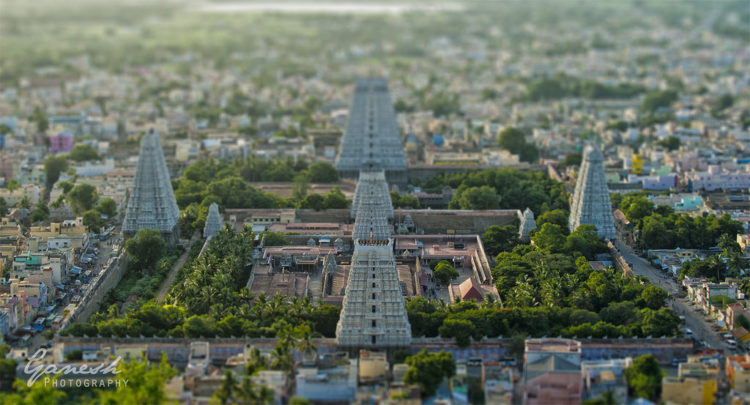
At the same time, he encounters the text, Periyapuranam which has stories of 63 shaivite saints of Tamilnadu.
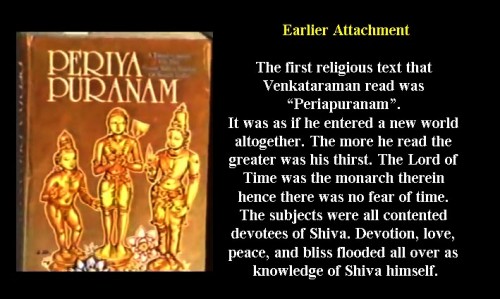
Their benediction and devotion mesmerizes and inspires him to follow.
4. 1896:
The young boy, Venkataraman has a near death experience while at home. In the midst of his happy and healthy life, he is suddenly seized by the fear of death. He lies in shavasana stilling his body, his mind in complete awareness of the moment enquires, who is the one who is dead? In response, he receives that it is neither his body nor his mind which is truly him, but his real self which is immortal and ever present.

This is the narrative in Bhagavan’s own words…
“It was about six weeks before I left madurai for good that a great change in my life took place . It was quite sudden. I was sitting in a room on the first floor of my uncle’s house. I seldom had any sickness and on that day there was nothing wrong with my health, but a sudden, violent fear of death overtook me. There was nothing in my state of health to account for it; and I did not try to account for it or to find out whether there was any reason for the fear. I just felt, ‘I am going to die,’ and began thinking what to do about it. It did not occur to me to consult a doctor or my elders or friends. I felt that i had to solve the problem myself, then and there.
The shock of the fear of death drove my mind inwards and I said to myself mentally, without actually framing the words: ‘Now death has come; what does it mean? What is it that is dying? This body dies.’ and I at once dramatized the occurrence of death. I lay with my limbs stretched out stiff as though rigor mortis had set in and imitated a corpse so as to give greater reality to the enquiry. I held my breath and kept my lips tightly closed so that no sound could escape, so that neither the word ‘I’ or any other word could be uttered, ‘well then,’ I said to myself, ‘this body is dead. It will be carried stiff to the burning ground and there burnt and reduced to ashes. But with the death of this body am I dead? Is the body ‘I’? It is silent and inert but I feel the full force of my personality and even the voice of the ‘I’ within me, apart from it. So I am spirit transcending the body. The body dies but the spirit that transcends it cannot be touched by death. This means I am the deathless spirit.’ all this was not dull thought; it flashed through me vividly as living truth which I perceived directly, almost without thought-process. ‘I’ was something very real, the only real thing about my present state, and all the conscious activity connected with my body was centered on that ‘I’. From that moment onwards the ‘I’ or self focused attention on itself by a powerful fascination. Fear of death had vanished once and for all. Absorption in the self continued unbroken from that time on. Other thoughts might come and go like the various notes of music, but the ‘I’ continued like the fundamental sruti note that underlies and blends with all the other notes. Whether the body was engaged in talking, reading, or anything else, I was still centred on ‘I’. Previous to that crisis I had no clear perception of my self and was not consciously attracted to it. I felt no perceptible or direct interest in it, much less any inclination to dwell permanently in it.”

5. August 29, 1896:
After the death experience, Venkataraman looses all interest in his studies, play and everything else. He is reprimanded for this by his brother and his teacher, on which he asks himself, “What work have I left to do here now”? So one fine day, when his brother leaves him a 5 rupee to pay his school fee, he writes a letter thus…
“I have set out in quest of my father in accordance with his command. This (meaning his person) has only embarked on a virtuous enterprise. Therefore, no one need grieve over this act. And no money need be spent in search of this. Your college fee has not been paid. Here with rupees two.”
On that note, he leaves for Aarunachala which was a very tough trip as he finished his money reserves and has to walk, travel by a train, remain hungry and sleepless. None of the hardships however brings down his divine fervor.

6. September 1, 1896:
Ffinally on this day, which we celebrate as Bhagavan’s Advent day, Venkatraman arrives directly before God Arunachaleshwara at Thiruvanamallai.
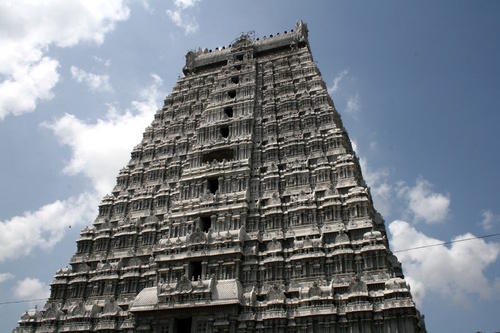
He announces his arrival to the lord by saying, “Beloved father, I have come here in obedience to your command”. He never left the town for the next 54 years until he left his mortal coil. He stays briefly at banana grove and then retires to an underground cellar called the Patala Lingam in the temple.
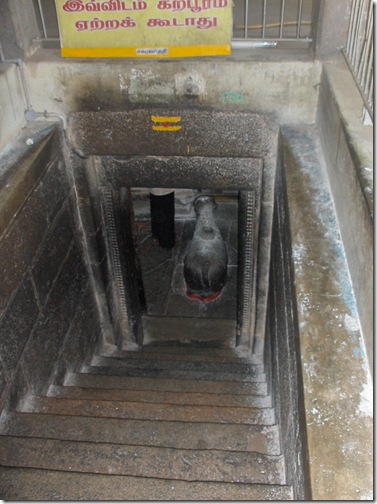
Naughty boys pelt stones at him even when the totally lost Venkatraman sits amidst total darkness and his body starts seeping sores out of the many insect bites that happen there. He has no body consciousness and is attended and protected by Seshadri Swami. He is soon moved from there to Sri Subramannaiyar temple and Mangai Pilliyar Shrine.
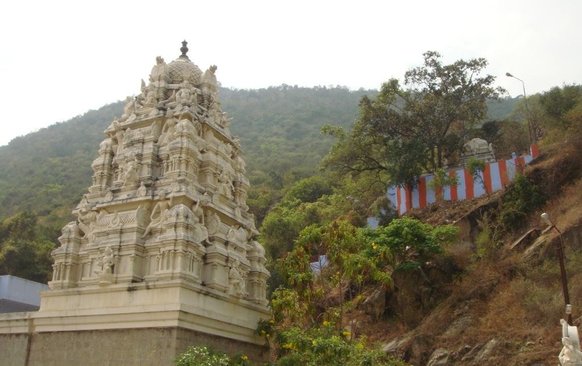
Soon news reaches his home about his whereabouts and mother Alagammal and uncle Nelliyappa Iyer come to Thiruvanamallai to plead of him to return home.

Bhagavan remaines unmoved by his mother’s emotional blackmail and answeres her thus…
“In accordance with the prarabdha of each, the one whose function it is to ordain makes each to act. What will not happen will never happen, whatever effort one may put forth. And what will happen will not fail to happen, however much one may seek to prevent it. This is certain. The part of wisdom therefore is to stay quiet.”
They go back home soon after and Bhagavan comes to stay at Pavalakatu.
7. 1897:
He stayes at Gurumurtam where Palaniswamy, a Malayali man who came to serve him after listening about the great saint accompanies him.
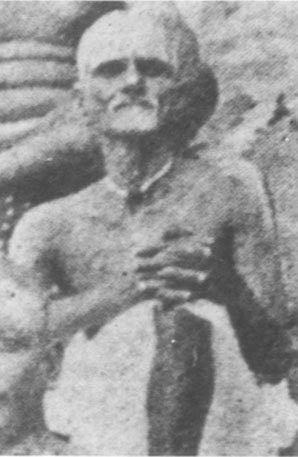
The man continues to be Bhagavan’s personal caretaker for the next 21 years.
(David Godman on Gurumurtam temple)
8. 1899-1902:
In 1899, Bhagavan roames around many caves at Arunachala mountain like mango cave, Namasivayar cave and Vannathi cave.
Finally in September 1899, he comes to reside in Virupaksha cave where he stays for next 17 years.
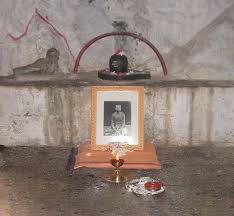
Here he composes the devotional treatise of Aksharmanmalai, Ramana Stuti Panchakam and later in 1902, the teaching of “Who am I”, which is compiled by Sivaprakasam Pillai.
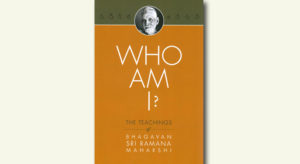
(David Godman on Virupaksha Cave)
9. 1906:
A deadly plague takes over the whole town succumbing many and the rest of the population all most flees the town. Bhagavan comes to stay at the Mulaippal tank and Pachaiammal temple.
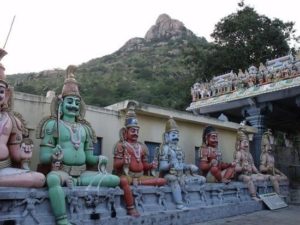
This is the place where Parvati had done her penance for Shiva and is thus green colour in its layout (pachai means green in Tamil)
(David Godman on Pachaiammal temple)
10. 1908:
The Jnani Kavyakantha (the one who had poetry in his throat) Ganapati Muni, fondly called as Nayana (father) who had practised several type of penances, comes to know of Bhagavan and proposes to him his discouragement of still remaining away from the truth.
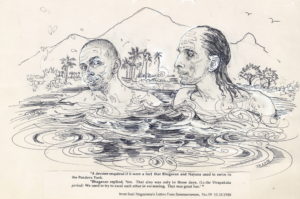
He asks Bhagavan, what tapas is. Bhagavan answeres him thus…
“If one watches whence the notion arises, the mind gets absorbed there; that is tapas. When a mantra is repeated, if one watches whence that mantra sound arises, the mind gets absorbed there; that is tapas.”

He gave the name of “Bhagavan Ramana Maharishi” and stays with Bhagavan in close association from 1922-1929 composing many prose and poetry works, finally succumbing to the light in 1936.
11. 1911:
The first Western devotee to visit Bhagavan is Frank H Humphreys, a policeman by profession. Thus he opens the gates of his grace to the western world.
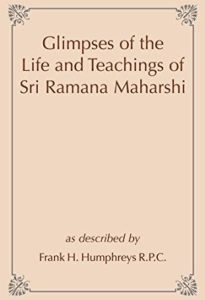
Writing about his first visit to the sage in the international psychic gazette, he says…
“On reaching the cave we sat before him, at his feet, and said nothing. We sat thus for a long time and I felt lifted out of myself. For half an hour I looked into the Maharshi’s eyes, which never changed their expression of deep contemplation…. The Maharishi is a man beyond description in his expression of dignity, gentleness, self-control and calm strength of conviction.”
12. 1912:
Bhagavan has his second death experience while walking around on the sacred hill. He suddenly turns livid blue, and looses all body consciousness, returning back after a while.

13. 1916:
Bhagavan lives at Skandashram from 1915 to 1922.

This is where his mother joins him and starts preparing meals at the ashram rather than having prepared food carried up – as had been the case since the earliest years.
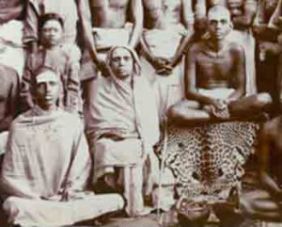
She is the first woman to be allowed to stay there and takes over the kitchen.
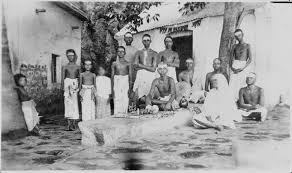
She was ailing for few days when Bhagavan takes deep care of her and she finally passes away on May 19th, 1922.
14. 1922-1936:
Mother’s body was carried down from the hill and Bhagavan personally monitors closely the work of constructing mother’s samadhi himself.


He would initially visit there every day until he comes down and started staying there. Soon, Ramanashramam is created in that area and devotees started staying around him. Many Indian and Western devotees begin to visit him but he continues to remain indifferent to the fame or the ashram. His silent and powerful presence is a spiritual magnet that drew people from far and wide.

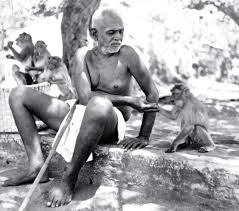

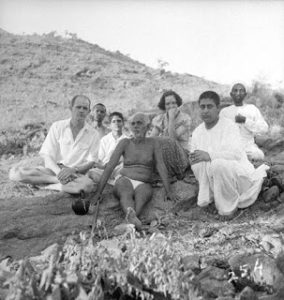
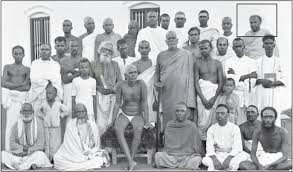

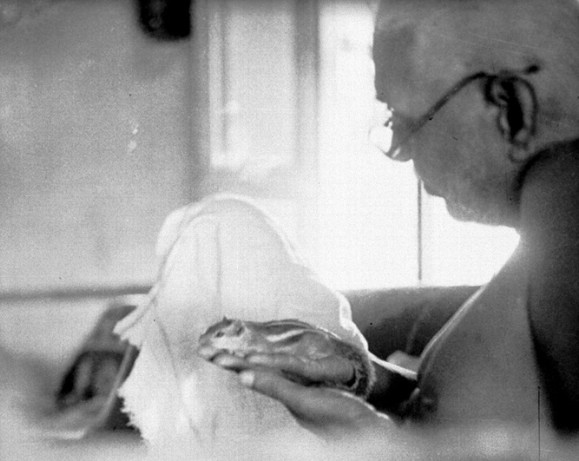
But it wasn’t that he was not active. He would stitch leaf-plates, dress vegetables, read proofs received from the press, look into newspapers and books, suggest lines of reply to letters received, etc. Yet it is quite evident that he is detached from everything. There are numerous invitations for him to undertake tours. But he never moves out of Thiruvannamalai and from 1926 onward, out of the ashram, for by then he stops going round the hill. Every day people sit before him, mostly in silence.
Sometimes some of them ask questions some of which he would answer. It was a great experience to sit before him and to look at his beaming eyes. Many experience time coming to a stop and a stillness and peace beyond description. Many of his famous devotees were Arthur Osborne, Paul Brunton, Eecchamal, Suri Naggama, David Godman and Robert Adams.
15. 1927:
Bhagavan composes the famous 30 verse text of Updesa Saaram in all four languages of Tamil, Telugu, Sanskrit and Malyalam.

16. 1934:
The western world is illuminated by Bhagavan’s raptures when a western devotee called Paul Brunton visits Bhagavan and caught in his net, wrote a book called “A Search in Secret India” in the year 1934.

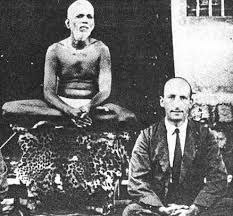
17. 1939:
On september 1st 1939, the foundation is laid for Matrubhuteshwarar temple.
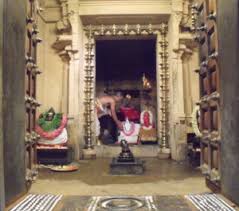
Its construction is finished in 1949.
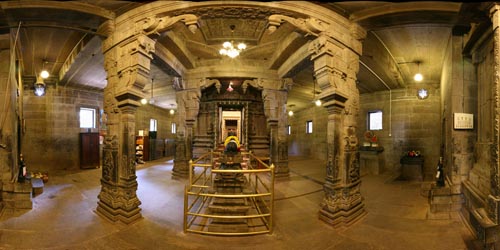
Later, a Sri Chakra is mounted and also a larger darshan hall is created where Bhagavan is moved to.

18. 1945-1948:
The cow Lakshmi appears as Bhagavan’s ardent devotee and deliveres a calf on every jayanthi day of Bhagavan for four years consecutively.
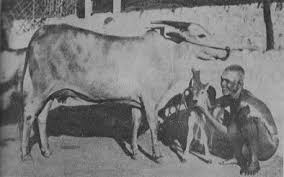
She is believed to be a reincarnation of his devotee, a woman called Keerai Patti who used to feed Bhagavan with green vegetables out of devotion in 1900. Laxmi visits Bhagavan everyday until she attains moksha on June 18th, 1948.

19. 1946:
Devotees celebrate the Golden jublee of Bhagavan’s arrival at Arunachala.
20. 1948-1949:
In 1948, a pea sized tumour appeares on Bhagavan’s left elbow which is a cancerous swelling. Over the next 14 months, Bhagavan is operated four times for the swelling which continues to recur after every surgery. His surgeries are done in february, march, august and december respectively of the same year. Bhagavan continues to remain blissfully enveloped in his self and indifferent to the bodily pain. Through this time, he clearely showcases to the world about his high spiritual stature and many flock to him for blessings and darshan. He continues to sit in tranquil peace blessing . On the evening of 14th april, Bhagavan’s breath is heavy and he is made to sit up and he refused oxygen therapy. Some devotee in the outside hall started singing the Aksharmanmallai and a single tear rolls from Bhagavan’s corner of the eye. He attains Mahanirvana at 8:47 pm when a blazing meteor of light flashes across the sky over the Arunachala mountain and is witnessed by many people in the skies clearly pronouncing his Maharishi status which he denied lifelong.
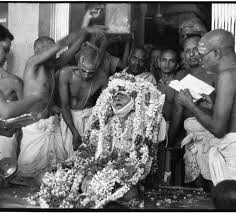
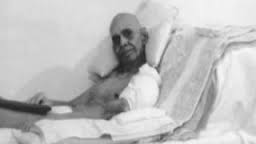
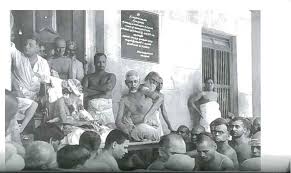

“Unveiled here I am, effulgent in my eternal reality.”
20. 1950:
Bhagavan’s samadhi shrine is constructed where the Parayana is sung twice a day everyday and is a heaven for devotees to discover their true self.
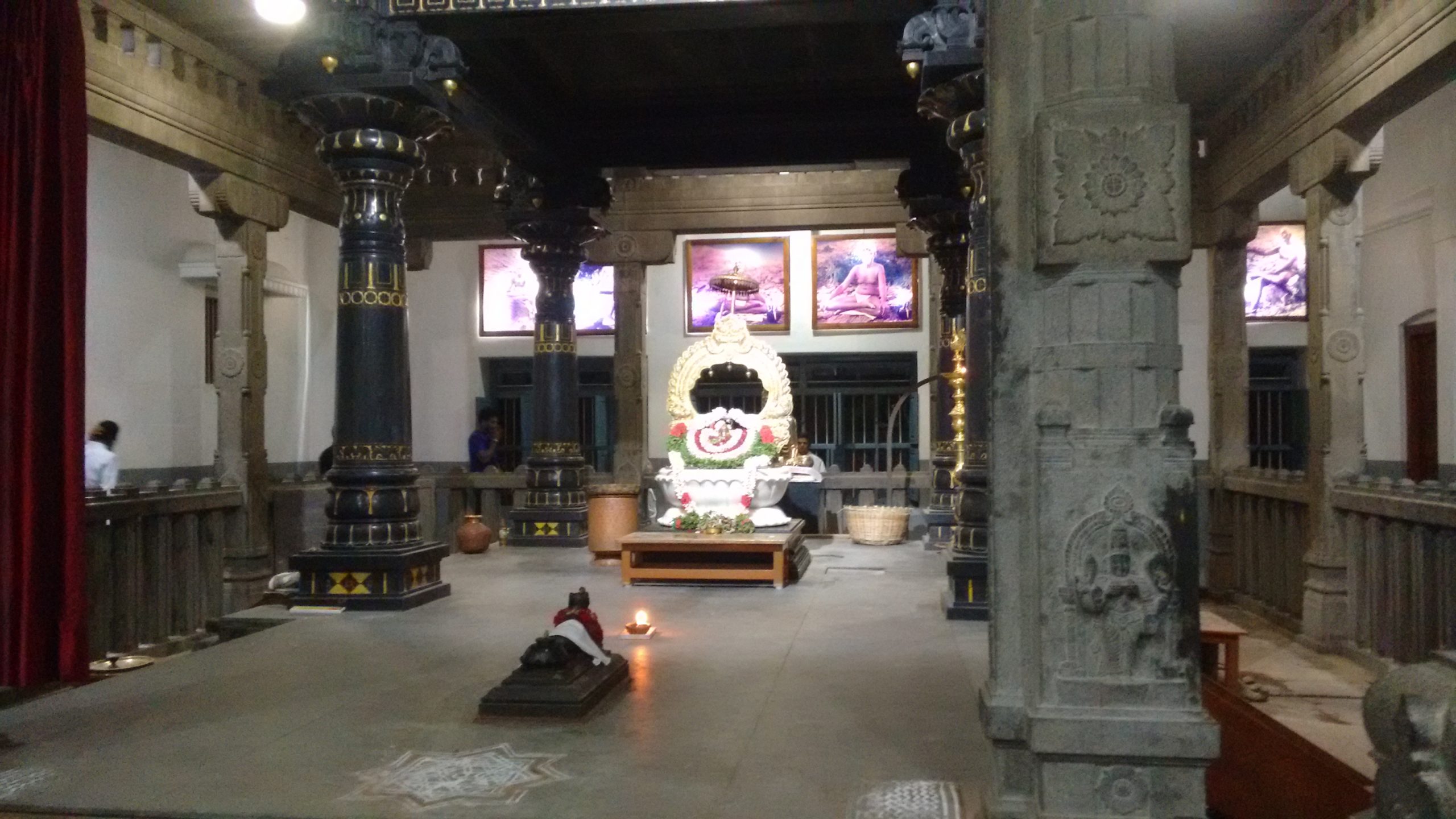
References, Important inputs and Gratitude:
- http://www.sriRamanamaharshi.org/Ramana-maharshi/multimedia-timeline/
- https://en.wikipedia.org/wiki/Ramana_maharshi
- http://www.arunachala-Ramana.org/photos/photos.htm
- Bhagwan’s timeline video curated by San Deep
About Bhagwan Ramana Maharishi
Birth Name: Venkataraman Iyer
Date of Birth: 30 December 1879
Date of Death: 14 April 1950
Age at Time of Death: 71 Years
He was a Hindu Sage and Jivan Mukta. He was born Venkataraman Iyer, but is most commonly known by the name Bhagavan Sri Ramana Maharshi. He was born in, what is now known as Tiruchuli, Tamil Nadu, India.
Citation: https://en.wikipedia.org/wiki/Ramana_Maharshi#Adolescence_and_awakening_(1895%E2%80%931896)
Early Life: In 1895, an attraction to the sacred hill Arunachala and the 63 Nayanars was aroused in him, and in 1896, at the age of 16, he had a “death-experience” where he became aware of a “current” or “force” (avesam) which he recognised as his true “I” or “self”, which he later identified with Ishvara. This resulted in a state that he later described as “the state of mind of Iswara or the jnani”. Six weeks later he left his uncle’s home in Madurai, and journeyed to the holy mountain Arunachala, in Tiruvannamalai, where he took on the role of a sannyasin (though not formally initiated), and remained for the rest of his life as a sannyasin.
Citation: https://en.wikipedia.org/wiki/Ramana_Maharshi#Adolescence_and_awakening_(1895%E2%80%931896)
Awakneings: Venkataraman first attended Scott’s Middle School and then the American Mission High School where he became acquainted with Christianity.
In November 1895 Venkataraman realized that Arunachala, the sacred mountain, was a real place. He had known of its existence from an early age, and was overwhelmed by the realisation that it really existed. During this time, he also read Sekkizhar’s Periyapuranam, a book that describes the lives of the 63 Nayanars, which “made a great impression” on him, and revealed to him that “Divine Union” is possible. According to Osborne, a new current of awareness started to awaken during his visits to the Meenakshi Temple at Madurai, “a state of blissful consciousness transcending both the physical and mental plane and yet compatible with full use of the physical and mental faculties”.
According to Narasimha, in July 1896, at age 16, a sudden fear of death befell him. He was struck by “a flash of excitement” or “heat,” like some avesam, a “current” or “force” that seemed to possess him, while his body became rigid. He initiated a process of self-enquiry asking himself what it is that dies. He concluded that the body dies, but that this “current” or “force” remains alive, and recognised this “current” or “force” as his Self, which he later identified with “the personal God, or Iswara”.
In one of his rare written comments on this process Ramana Maharshi wrote, “Enquiring within Who is the seer? I saw the seer disappear leaving That alone which stands forever. No thought arose to say I saw. How then could the thought arise to say I did not see.”
Later in life, he called his death experience akrama mukti, “sudden liberation,” as opposed to the krama mukti, “gradual liberation” as in the Vedanta path of jnana yoga. It resulted in a state of mind which he later described as “the state of mind of Iswara or the jnani:”
After reading the language of the sacred books, I see it may be termed suddha manas [pure mind], akhandakara vritti [unbroken experience], prajna [true knowledge] etc.; that is, the state of mind of Iswara or the jnani.”
After this event, he lost interest in school studies, friends, and relations. He was absent-minded at school, “imagining and expecting God would suddenly drop down from Heaven before me”. Avoiding company, he preferred to sit alone, absorbed in concentration on this current or force, and went daily to the Meenakshi Temple, ecstatically devoted to the images of the 63 Nayanars and of Nataraja, wanting “the same grace as was shown to those saints,” praying that he “should have the same bhakti that they had”and “[weeping] that God should give me the same grace He gave to those saints”.
Knowing his family would not permit him to become a sanyassin and leave home, Venkataraman slipped away, telling his brother he needed to attend a special class at school. Venkataraman boarded a train on 1 September 1896 and traveled to Tiruvannamalai where he remained for the rest of his life.
Citation: https://en.wikipedia.org/wiki/Ramana_Maharshi#Adolescence_and_awakening_(1895%E2%80%931896)
Spiritual Journey: On August 29th while working on a grammar assignment, Venkataraman suddenly realized the futility of it all, pushed the papers away and sitting cross legged entered into deep meditation. His brother Nagaswami who was observing him, remarked caustically, “What use is all this to such a one?” Recognizing the truth of his brother’s criticism, Venkataraman resolved to secretly leave home. He got up and left the house, making the excuse that he had to return to school. His brother gave him five rupees to pay his college fees, thus unknowingly providing funds for the journey. Venkataraman kept three rupees and left the remaining two rupees with the following parting note:
I have in search of my father and in obedience to His command started from here. This is only embarking on a virtuous enterprise. Therefore none need grieve over this affair. To trace this out no money need be spent. Your college fee has not yet been paid. Rupees two are enclosed herewith. Thus,
Providence was guiding Venkataraman as he journeyed to Arunachala, for although he arrived late at the station the train was also late. He bought a ticket to Tindivanam which seemed to be the nearest place to Tiruvannamalai based on an old atlas. An aged Moulvi in his compartment noticed the Brahmin youth seated by his side in deep contemplation. The Moulvi engaged him in conversation and informed him that there was a newly-opened line to Tiruvannamalai from Villupuram.
At about three in the morning the train arrived at Villupuram. Deciding to walk the rest of the way, Venkataraman wandered into town looking for the road to Tiruvannamalai. He was feeling hungry and went to a hotel where he was asked to wait until midday for his meal. The hotel keeper watched with interest this young Brahmin lad with a fair complexion, long jet-black locks, golden ear-rings, a face beaming with intelligence and having no luggage or possessions. After finishing the meal the youth offered two annas; however, the proprietor refused the payment. Venkataraman started at once to the railway station where he purchased a ticket to Mambalapattu which was as far as his funds permitted him to go.
In the afternoon Venkataraman arrived at Mambalappattu. From there he set out on foot for Tiruvannamalai and by evening he reached the vicinity of Tirukoilur. At the nearby temple of Arayaninallur, built on a high rock, one can see the Arunachala Hill faintly appearing in the distance. Unaware of this, he went into the temple and sat down. There he had a vision – a vision of a dazzling light enveloping the entire place. Ramana looked for the source of the light within the inner sanctum. But nothing was found. The light disappeared after sometime.
Venkataraman continued sitting in a mood of deep meditation until he was disturbed by the temple priests who came to lock the doors. He followed the priests to the next temple where he plunged into meditation again. After finishing their duties the priests disturbed him once more and refused his request for food. The temple drummer intervened and offered his share of the temple food. When Venkataraman asked for some drinking water, he was directed to a a nearby house. On the way there he fainted and fell down. A few minutes later he got up and saw a small crowd looking at him curiously. He drank some water, ate some food, and then lay down and slept.
Next morning was the 31st of August, the day of Sri Krishna’s birth, Gokulashtami. Venkataraman resumed his journey and reached the house of Muthukrishna Bhagavatar. The lady of the house gave him a large meal and kept him there until noon. He then asked his hosts for a loan on the pledge of his golden ear-rings. The loan was willingly given along with a parcel of sweets prepared for Sri Krishna. Finding that there was no train until the next morning, he spent the night at the station.
It was the morning of September 1st 1896, three days after leaving home, that Venkataraman arrived at Tiruvannamalai station.With quick steps his heart throbbing with joy, he hastened straight to the great temple. In mute sign of welcome, the gates of the three high compound walls and all the doors, even that of the inner shrine, stood open. There was no one else inside, so he entered the inner shrine alone and stood overcome before His father Arunachala. “I have come at your call, Lord. Accept me and do with me as you will.”
Citation: https://www.sriramanamaharshi.org/ramana-maharshi/journey-home/
Death Experience: The turning point in Venkataraman’s life came spontaneously in mid-July 1896. One afternoon, the youth for no apparent reason was overwhelmed by a sudden, violent fear of death. Years later, he narrated this experience as follows:
It was about six weeks before I left Madura for good that a great change in my life took place . It was quite sudden. I was sitting in a room on the first floor of my uncle’s house. I seldom had any sickness and on that day there was nothing wrong with my health, but a sudden, violent fear of death overtook me. There was nothing in my state of health to account for it; and I did not try to account for it or to find out whether there was any reason for the fear. I just felt, ‘I am going to die,’ and began thinking what to do about it. It did not occur to me to consult a doctor or my elders or friends. I felt that I had to solve the problem myself, then and there.
The shock of the fear of death drove my mind inwards and I said to myself mentally, without actually framing the words: ‘Now death has come; what does it mean? What is it that is dying? This body dies.’ And I at once dramatized the occurrence of death. I lay with my limbs stretched out stiff as though rigor mortis had set in and imitated a corpse so as to give greater reality to the enquiry. I held my breath and kept my lips tightly closed so that no sound could escape, so that neither the word ‘I’ or any other word could be uttered, ‘Well then,’ I said to myself, ‘this body is dead. It will be carried stiff to the burning ground and there burnt and reduced to ashes. But with the death of this body am I dead? Is the body ‘I’? It is silent and inert but I feel the full force of my personality and even the voice of the ‘I’ within me, apart from it. So I am Spirit transcending the body. The body dies but the Spirit that transcends it cannot be touched by death. This means I am the deathless Spirit.’ All this was not dull thought; it flashed through me vividly as living truth which I perceived directly, almost without thought-process. ‘I’ was something very real, the only real thing about my present state, and all the conscious activity connected with my body was centred on that ‘I’. From that moment onwards the ‘I’ or Self focused attention on itself by a powerful fascination. Fear of death had vanished once and for all. Absorption in the Self continued unbroken from that time on. Other thoughts might come and go like the various notes of music, but the ‘I’ continued like the fundamental sruti note that underlies and blends with all the other notes. Whether the body was engaged in talking, reading, or anything else, I was still centred on ‘I’. Previous to that crisis I had no clear perception of my Self and was not consciously attracted to it. I felt no perceptible or direct interest in it, much less any inclination to dwell permanently in it.
The effect of the death experience brought about a complete change in Venkataraman’s interests and outlook. He became meek and submissive without complaining or retaliating against unfair treatment. He later described his condition:
One of the features of my new state was my changed attitude to the Meenakshi Temple. Formerly I used to go there occasionally with friends to look at the images and put the sacred ash and vermillion on my brow and would return home almost unmoved. But after the awakening I went there almost every evening. I used to go alone and stand motionless for a long time before an image of Siva or Meenakshi or Nataraja and the sixty-three saints, and as I stood there waves of emotion overwhelmed me.
Citation: https://www.sriramanamaharshi.org/ramana-maharshi/death-experience/
Legacy: Although many claim to be influenced by him, Ramana Maharshi did not publicise himself as a guru, never claimed to have disciples, and never appointed any successors. While a few who came to see him are said to have become enlightened through association, he did not publicly acknowledge any living person as liberated other than his mother at death. Ramana never promoted any lineage.
With regard to the Sri Ramana Ashram, in 1938 Maharshi made a legal will bequeathing all the Ramanashram properties to his younger brother Niranjanananda and his descendants. In 2013, Ramanashram is run by Sri Niranjananda’s grandson Sri V.S. Raman. Ramanashram is legally recognised as a public religious trust whose aim is to maintain it in a way that is consistent with Sri Ramana’s declared wishes. The ashram should remain open as a spiritual institution so that anyone who wishes to can avail themselves of its facilities.
In the 1930s, Maharshi’s teachings were brought to the west by Paul Brunton in his A Search in Secret India. Stimulated by Arthur Osborne, in the 1960s Bhagawat Singh actively started to spread Ramana Maharshi’s teachings in the US. Ramana Maharshi has been further popularised in the west by the neo-Advaita movement, which the students of H. W. L. Poonja have been instrumental in, and which gives a western re-interpretation of his teachings placing sole emphasis on insight alone. It has been criticised for this emphasis, omitting the preparatory practices. Nevertheless, Neo-Advaita has become an important constituent of popular western spirituality.
Citation: https://en.wikipedia.org/wiki/Ramana_Maharshi#Legacy
Bhagwan Ramana Maharshi Quotes:
- “Who am I? Not the body, because it is decaying; not the mind, because the brain will decay with the body; not the personality, nor the emotions, for these also will vanish with death.”“Without understanding yourself, what is the use of trying to understand the world?”
- “Your own Self-Realization is the greatest service you can render the world.”
- “Happiness is your nature. It is not wrong to desire it. What is wrong is seeking it outside when it is inside.”
- “Your duty is to be and not to be this or that. ‘I am that I am’ sums up the whole truth. The method is summed up in the words ‘Be still’. What does stillness mean? It means destroy yourself. Because any form or shape is the cause for trouble. Give up the notion that ‘I am so and so’. All that is required to realize the Self is to be still. What can be easier than that?”
- “Whatever is destined not to happen will not happen, try as you may. Whatever is destined to happen will happen, do what you may to prevent it. This is certain. The best course, therefore, is to remain silent.”
- “Wanting to reform the world without discovering one’s true self is like trying to cover the world with leather to avoid the pain of walking on stones and thorns. It is much simpler to wear shoes.”
- “Have faith in God and in yourself; that will cure all. Hope for the best, expect the best, toil for the best and everything will come right for you in the end.”
- “There is neither creation nor destruction,
neither destiny nor free will, neither
path nor achievement.
This is the final truth. - “There is neither Past nor Future. There is only the Present.”
- “All that is required to realise the Self is to “Be Still.”
- “Realisation is not acquisition of anything new nor is it a new faculty. It is only removal of all camouflage”
- “You can only stop the flow of thoughts by refusing to have any interest in it.”
- “If you go on working with the light available, you will meet your Master, as he himself will be seeking you.”
- “If the mind falls asleep, awaken it. Then if it starts wandering, make it quiet. If you reach the state where there is neither sleep nor movement of mind, stay still in that, the natural (real) state.”
- “Aim high, aim at the highest, and all lower aims are thereby achieved. It is looking below on the stormy sea of differences that makes you sink. Look up, beyond these and see the One Glorious Real, and you are saved.”
- “What is illusion?
M.: To whom is the illusion? Find it out. Then illusion will vanish.
Generally people want to know about illusion and do not examine
to whom it is. It is foolish. Illusion is outside and unknown. But
the seeker is considered to be known and is inside. Find out what
is immediate, intimate, instead of trying to find out what is distant
and unknown.” - “Time is only an idea. There is only the Reality Whatever you
think it is, it looks like that. If you call it time, it is time. If you
call it existence, it is existence, and so on. After calling it time, you
divide it into days and nights, months, years, hours, minutes, etc.
Time is immaterial for the Path of Knowledge. But some of these
rules and discipline are good for beginners.” - “Know that the eradication of the identification with the body is charity, spiritual austerity and ritual sacrifice; it is virtue, divine union and devotion; it is heaven, wealth, peace and truth; it is grace; it is the state of divine silence; it is the deathless death; it is jnana, renunciation, final liberation and bliss.”
- “No one succeeds without effort… Those who succeed owe their success to perseverance.”
- “The pure mind is itself Brahman; it therefore follows that Brahman is not other than the mind of the sage.”
- “The greatest error of a man is to think that he is weak by nature, evil by nature. Every man is divine and strong in his real nature. What are weak and evil are his habits, his desires and thoughts, but not himself.”
- “Let what comes come.
Let what goes go.
Find out what remains.” - “Become conscious of being conscious. Say or think “I am”, and add nothing to it. Be aware of the stillness that follows the “I am”. Sense your presence, the naked unveiled, unclothed beingness. It is untouched by young or old, rich or poor, good or bad, or any other attributes. It is the spacious womb of all creation, all form.”
- “If you hold this feeling of ‘I’ long enough and strongly enough, the false ‘I’ will vanish leaving only the unbroken awareness of the real, immanent ‘I’, consciousness itself”
- “Remain still, with the conviction that the Self shines as everything yet nothing, within, without, and everywhere.”
- “When one remains without thinking one understands another by means of the universal language of silence.”
- “The explorers seek happiness in finding curiosities, discovering new lands and undergoing risks in adventures. They are thrilling. But where is pleasure found? Only within. Pleasure is not to be sought in the external world.”
- “All are gurus to us, the wicked by their evil deeds say, ‘do not come near me’. the good are always good, therefore all are like gurus to us.”
- “The only useful purpose of the present birth is to turn within and realize the Self.”
- “There is nothing like ‘within’ or ‘without.’ Both mean either the same thing or nothing.”
- “It will come all right in the end.”
- “Mind your business. Take care of what you came here for. Find the ‘I’ first and you may afterwards speak of other matters.”
- “Everything in the world was my Guru.”
- “The revelation or intuition arises in its own time and one must wait for it.”
- “Your concentration must come as easily as the breath. Fix yourself on one thing and try to hold onto it. All will come right. Meditation is sticking to one thought. That single thought keeps away other thoughts. The dissipated mind is a sign of its weakness. By constant meditation it gains strength.”
- “Do what is right at a given moment and leave it behind”
- “You are awareness. Awareness is another name for you. Since you are awareness there is no need to attain or cultivate it.”
- “Grace is always present. You imagine it is something somewhere high in the sky, far away, and has to descend. It is really inside you, in your Heart, and the moment you effect subsidence or merger of the mind into its Source, grace rushes forth, sprouting as from a spring within you”
- “The enquiry ‘Who am I?’ is the principal means to the removal of all misery and the attainment of the supreme bliss.”
- “when there is no ‘I’ there is no karma.”
- “That which is worth taking up is the self-enquiry that reveals jnana; that which is worth enjoying is the grandeur of the Self; that which is worth renouncing is the ego-mind; that in which it is worth taking refuge, to eliminate sorrow completely, is one’s own source, the Heart.”
- “The mind is by nature restless. Begin liberating it from its restlessness; give it peace; make it free from distractions; train it to look inward; make this a habit. This is done by ignoring the external world and removing the obstacles to peace of mind.”
- “One of two things must be done. Either surrender because you admit your inability and require a higher power to help you, or investigate the cause of misery by going to the source and merging into the Self. Either way you will be free from misery. God never forsakes one who has surrendered.”
- “The peace of mind which permeates the saint’s atmosphere is the only means by which the seeker understands the greatness of the saint.”
- “Although the modes of meditation may appear to be different from one another, in the end all of them become one. There is no need to doubt this. One may adopt that path which suits the maturity of one’s mind.”
- “To perform one’s duty is the greatest service to God.”
- “People such as inventors searching for new material, make their discoveries in a state of self-forgetfulness. It is in a condition of deep intellectual concentration that this forgetfulness of the ego arises and the invention is revealed. This is also a way of developing intuition.”
- “The Power that created you has created the world as well. If it can take care of you, it can similarily take care of the world also. If God has created the world, it is His business to look after it, not yours.”
- “Complete surrender does require that you have no desire of your own, that God’s desire alone is your desire and that you have no desire of your own.”
- “The reply comes as a current of awareness in the Heart, fitful at first and only achieved by intense effort, but gradually increasing in power and constancy, becoming more spontaneous, acting as a check on thoughts and actions, undermining the ego, until finally the ego disappears and the certitude of pure Consciousness remains.”
- “Controlling speech and breath, and diving deep within oneself — like one who, to find a thing that has fallen into water, dives deep down — one must seek out the source whence the aspiring ego springs.”
- “The body is the temple; the jiva is God (Siva). If one worships him with the ‘I am He’ thought, one will gain release.”
- “you must achieve liberation during your life time.
Even if you fail to do it during your lifetime, you must think of god at least at the time of death, since one becomes what he thinks of
at the time of death. But unless all your life you have been thinking of God, unless you have accustomed yourself to dhyana of ‘God
always during life, it would not at all be possible for you think of God at the time of death.” - “If a person overlooks the faults of others, and sees only their merits, and thus keeps his mind serene, his whole life will be happy. To be unconcerned in all things, with the mind cool, free of desires and without hate, is beautiful in a seeker.”
- “He who has renounced (the ‘I-thought’) thus, remains the same whether he is alone or in the midst of the extensive samsara”
- “The man who prays, the prayer, and the God to whom he prays all have reality only as manifestations of the Self.”
- “If the light of the sun is invisible to the owl it is only the fault of that bird and not of the sun.”
- “Solitude is in the mind of man. One might be in the thick of the world and maintain serenity of mind; such a one is in solitude. Another may stay in a forest, but still be unable to control his mind. He cannot be said to be in solitude. Solitude is a function of the mind. A man attached to desire cannot get solitude wherever he may be; a detached man is always in solitude.”
- “When the mind that is subtle goes out through the brain and the sense-organs, the gross names and forms appear; when it stays in the Heart, the names and forms disappear.”
- “While God sustains the burden of the world, the spurious ego assumes its burden, grimacing like an image on a tower, seeming to support it. If the traveller in a carriage, which can carry any weight, does not lay his luggage down but carries it painfully on his head, whose is the fault?”
- “Real peace is happiness. Pleasures do not form happiness.”
- “Thoughts of bondage and of freedom last only as long as one feels, ‘I am bound’. When one enquires of oneself, ‘Who am I, the bound one?’ the Self, Eternal, ever free, remains. The thought of bondage goes; and with it goes the thought of freedom too.”
- “So long as they make efforts they will not be sages (jnanis).”
- “The ego in its purity is experienced in intervals between two states
or two thoughts. Ego is like that caterpillar which leaves its hold
only after catching another. Its true nature can be found when it is
out of contact with objects or thoughts.” - “Enlightened enquiry alone leads to liberation. Supernatural powers are all illusory appearances created by the power of maya (mayashakti). Self-realization which is permanent is the only true accomplishment (siddhi). Accomplishments which appear and disappear, being the effect of maya, cannot be real. They are accomplished with the object of enjoying fame, pleasures, etc. They come unsought to some persons through their karma. Know that union with Brahman is the real aim of all accomplishments. This is also the state of liberation (aikya mukti) known as union (sayujya).”
- “It is beyond words or thoughts.”
- “A day will dawn when you will laugh at your past efforts. What you realize on the day you laugh is also here and now”
- “As the activities of the wise man exist only in the eyes of others and not in his own, although he may be accomplishing immense tasks, he really does nothing.”
- “Giving up all notions about country, caste, blemishless community,asrama (status as a bachelor, family man, ascetic or one who has renounced the world) and associated matters, hold on to and practise always meditation upon the Self, your own natural state.”
- “Whatever draws the mind outward is unspiritual and whatever draws the mind inward is spiritual”
- “The body which is matter says not ‘I’. Eternal Awareness rises not nor sets. Betwixt the two, bound by the body, rises the thought of ‘I’. This is the knot of matter and Awareness. This is bondage, jiva, subtle body, ego. This is samsara, this is the mind.”
- “there is no doubt that the end of the paths of devotion and knowledge is one and the same.”
- “Both in Jnani and ajnani, ego is sprouting forth, but with this difference, namely the ajnani’s ego when it rises up is quite ignorant of its source, or he is not aware of his sushupti in the dream and jagrat states; whereas a Jnani when his ego rises up enjoys his transcendental experience with this ego keeping his lakshya (aim) always on its source. This ego is not dangerous: it is like the skeleton of a burnt rope: in this form it is ineffective. By constantly keeping our aim on our source, our ego is dissolved in its source. like a doll of salt in the ocean.”
- “Be equally indifferent to both and abide in the faith of God. That will be so only when one’s faith is strong that God looks after all of us.”
- “I do not consider anyone to be my disciple. I have never sought upadesh from anyone nor do I give ceremonial upadesh. If the people call themselves my disciples I do not approve or disapprove.”
- “The colour of milk is one, the colours of the cows many, So is the nature of knowledge, observe the wise ones. Beings of various marks and attributes, Are like the cows, their realisation is the same; This is an example we should know.”
- “The fruition of this process is samadhi which yields release, which is the state of unsurpassed bliss. The revered Gurus also have said that release is to be gained only by devotion which is of the nature of reflection on the truth of the Self.”
- “The ultimate Truth is so simple. It is nothing more than being in the pristine state. This is all that need be said. till, it is a wonder that to teach this simple Truth there should come into being so many religions, creeds, methods and disputes among them and so on! Oh the pity! Oh the pity!”
- “In the middle of the Heart-cave the pure Brahman is directly manifest as the Self in the form of ‘I-I’.”
- “Does a man who is acting on the stage in a female part forget that he is a man? Similarly, we too must play our parts on the stage of life, but we must not identify ourselves with those parts
- “One can know oneself only with one’s own eye of knowledge, and not with somebody else’s. Does he who is Rama require the help of a mirror to know that he is Rama?”
- “Finally there comes a stage when a person feels helpless notwithstanding the sadhanas. He is unable to pursue the much-cherished sadhana also. It is then that Gods power is realized. The self reveals itself.”
- “Reality must be always real. It is not with forms and names. That which underlies all these is the reality. It underlies limitations, being itself limitless. It is not bound. It underlies unrealities, itself being real. Reality is that which is. It is as it is. It transcends speech. It is beyond the expressions ‘existence’, ‘non-existence’ etc.”
- “Action and knowledge are not obstacles to each other.”
- “the delusion of bondage fabricated by ignorance from time immemorial can be removed only by knowledge, and for this purpose the term ‘liberation’ (mukti) has been usually accepted. That is all. The fact that the characteristics of liberation are described in different ways proves that they are imaginary.”
- “If it is asked whether the wise man derives any benefit from the discharge of domestic duties, it may be answered that, as he has already attained the state of complete satisfaction which is the sum total of all benefits and the highest good of all, he does not stand to gain anything more by discharging family duties.”
- “When one adopts the practice (sadhana) by means of which one’s mind, which is restless like the wind, is made still perpetually, then the purpose of taking birth as a human being is fulfilled. That is also the mark of a true scholar. 38. Do not practise meditation by fixing the mind on the six adhara chakras, the ones that are up or down or in the middle, or anywhere else. Giving up all such meditations, make the mind always devoid of any support (either inside or outside).”
- “Gods and goddesses, merits, demerits and their fruits, which are likewise anya (other than oneself), objects of attachment and the knowledge of those objects — all these will lead one to bondage in mighty samsara.”
- “The Heart is used in the Vedas and the scriptures to denote the place whence the notion ‘I’ springs. Does it spring only from the fleshy ball? It springs within us somewhere right in the middle of our being. The ‘I’ has no location. Everything is the Self. There is nothing but that. So the Heart must be said to be the entire body of ourselves and of the entire universe, conceived as ‘I’. But to help the practiser we have to indicate a definite part of the Universe, or of the Body. So this Heart is pointed out as the seat of the Self. But in truth we are everywhere, we are all that is, and there is nothing else.”
- “Because of the grades in misery and happiness, the released ones, the jivanmuktas and videhamuktas, may be spoken of as belonging to four categories — Brahmavid, Brahmavara, Brahmavariya and Brahmavarishtha. But these distinctions are from the standpoint of the others who look at them; in reality, however, there are no distinctions in release gained through jnana.”
- “Remaining quiet is what is called wisdom-insight. To remain quiet is to resolve the mind in the Self. Telepathy, knowing past, present and future happenings and clairvoyance do not constitute wisdom-insight.”
- “How is breath control the means for mind control? M: There is no doubt that breath control is the means for mind control, because the mind, like breath, is a part of air, because the nature of mobility is common to both, because the place of origin is the same for both, and because when one of them is controlled the other gets controlled.”
- “so the force of the Self also travels through the psychic nerves and, pervading the entire body, imparts sentience to the senses, and that if this knot is cut, the Self will remain as it always is, without any attributes.”
- “The beginningless Consciousness is unborn, whole and, residing forever in its natural home of the Heart-cave, is without form, world or impurity. It is beyond comparison and completely unattached. It cannot be comprehended by the mind nor can it be seen or felt by the senses.”
- “What introverted mind calls peace, outside as power is shown; Those who have reached and found this truth, their unity have known.”
- “Of all yogins, only he who rests his unwavering mind and love in me is dear to me.”
- “When the pot is carried, the space within the pot, Though conceived of as carried, Is it not the pot only that is carried? The Self too, like Space, remains motionless. 53. When the pot breaks, the space in the pot Merges one with the great Space. When the inert body passes away, the Self, seemingly in the body, Becomes immediately one with the Supreme Self.”
- “Omniscience and bliss, and mature wisdom, Remaining independent, limitless strength — Attaining all these, he shines ever, the Self without afflictions. With an immaculate body, he, as the Self, merges in Siva. Japa of the name, worship, bathing in holy waters, ritual sacrifices, None of these or others are needed. The fruits of dharma and adharma, Water oblations to forefathers, None of these are for him. No injunctions for observance, no fasts, Nothing required by way of getting into or out of (any action), No vows of celibacy for him, know this. Not having any recourse to falling into the fire or water, Or falling from the mountain top, Enjoy the feast of the Knowledge of Siva, eternal and pure. Rid of the rules applying to all creation, move about as you please. I tell you this is the Truth, the Truth, the Truth, thrice over. There is nothing greater than this, Nothing greater is there to be known, Nothing at all, nowhere ever.”
- “The purpose of all these illustrations is to direct the seeker’s mind towards the one Reality underlying them all.”
- “Silence is also conversation.”
- “Lady with fair countenance! Understand that one who is not able to realise the Truth in his Heart by this knowledge of spiritual wisdom known as Kala Jnana, can never attain it even by studying countless crores of sastras (scriptures) spread out like the sky.”
- “Note: Some aspirants indulge in severe austerities and arduous practices, mastering several techniques and incidentally attaining extraordinary supernatural powers as well. All these are to be shunned as they do not lead to ultimate peace and joy. On the other hand, the path of Kala Jnana described here is a direct path to mukti.
- “Self is only Being – not this or that. It is Simple Being. BE, and that is the end of ignorance. Your duty is not to be this or that. I am that I am sums up the whole truth. The method is summed up in the words Be still. Be as you really are. Be yourself and nothing more. Remain aware of yourself and all else will be known”









